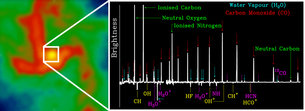It takes the "right stuff" to withstand cosmic bursts of camera light and meteoric bombardments of questions, but Tim Peake is orbit-ready and passed the test of facing the massed media this week.
As Britain's first official, government-backed astronaut, his selection for a mission in late 2015 marks a pivotal moment.
The UK astronaut tells BBC science editor David Shukman that it is a "true privilege" to be assigned to a long duration mission.
There are hopes that the space sector will grow - eventually to support as many as 100,000 jobs - and the figurehead of this renewed British effort in space is a former helicopter pilot from Chichester.
Science Minister David Willetts regards the £16m to secure Tim Peake's ticket as money well spent.
While Nasa wraps its astronauts in the rhetoric of fabled explorers - lots of "celestial destiny" and "bold endeavour" - the British take is far more mundane: the press release announcing Tim Peake's mission is mainly about British industry and jobs.








